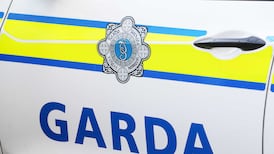THE BETHANY Survivors group is to deliver a demand to the Ministers for health, education, and justice next Monday that the former Bethany Home in Dublin be included in the State’s redress scheme for victims of institutional abuse.
A spokeswoman for the Church of Ireland said last night that it would be writing to the Department of Education again asking that it reconsider the decision not to include the Bethany Home on its redress list.
The survivors’ group represents people who had been infants in the mother and baby home which was run by Protestant evangelicals in Dublin’s Rathgar from 1922 to 1972.
It had no formal connection with any church, although some Protestant clergy were involved with its operations. The home was managed by an independent board of trustees.
Minister for Education Mary Coughlan said yesterday that there were no immediate plans to include those who had been at the Bethany Home in the State redress scheme. But she did admit that the Bethany Home has been used as a place of detention.
This was confirmed last July by Minister for Justice Dermot Ahern when he said that the home had been designated as a place of detention in 1945.
Five Protestant homes for children are on the list of institutions whose former residents are eligible to apply to the Residential Institutions Redress Board for compensation.
Derek Leinster, of the Bethany Survivors group, who was born at the home in 1941, told The Irish Timesthat he believed former residents there had been excluded from the redress scheme because they were a minority grouping.
“The Government don’t want to know about us, they treat us like we don’t exist. We are Irish citizens and we should be treated equally irrespective of what religion we are,” he said.
Niall Meehan, of Griffith College’s journalism and media department, discovered 40 unmarked Bethany Home graves at Mount Jerome Cemetery in Dublin last May.
He has since discovered a total of 219 Bethany graves in Mount Jerome for the period 1922-49, details of which were published for the first time in the latest edition of History Irelandmagazine yesterday.
He establised from records that 54 of the children had died from convulsions, 41 from heart failure and 26 from marasmus, a form of malnutrition.
As many as 86 deaths, or well over one-third of Bethany’s 219 child deaths in the 28 years between 1922-1949, occurred in one five-year period, during 1935-39.
Almost two-thirds (132) died in the 10-year period, 1935-44.
The worst year was 1936 when there were 29 deaths, with six babies buried the day they died. Eight more babies are buried in Mount Jerome (29) than were reported internally (21) to Bethany’s managing committee.
Mr Meehan said that “at a September 1936 meeting, the worst year for child mortality, Bethany’s managing committee considered a first highly critical report under the 1934 Maternity Act. The report found ‘the bedrooms were overcrowded and the medical staff inadequate’.”
Mr Meehan has also found that Bethany Home sent children to England, to Barnardo’s there, to the Salvation Army and to Fegan’s “Protestant, Evangelical, undenominational” Home for Boys. Seven children were sent to Fegan’s between 1929-47.
Mr Meehan has asked Barnardo’s to search records to discover the number of children exported from the Bethany Home.
In 1940 English police ordered Bethany Home to retrieve a child left in an English orphanage that was under investigation by the British NSPCC. In the 1950s the Bethany Home sent children for adoption to the United States.
Mr Meehan said that “the home’s standards of appraisal were not child-centred, they were religion-centred. Formerly divorced people were refused point blank. . .”
The Labour Party has backed the Bethany Survivors’ Group’s call for an inquiry into the institution and for admittance to the State redress scheme for former residents of the home.








